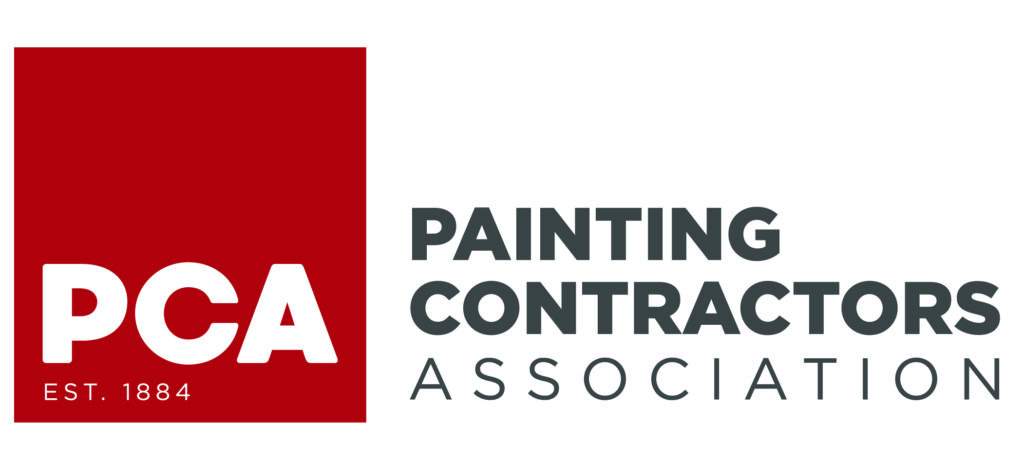Regarding exterior painting, temperature plays a crucial role in achieving optimal results. The ideal temperature range for exterior painting typically falls between 50°F and 90°F (10°C and 32°C). Within this range, the paint can adhere to the surface effectively, dry uniformly, and ensure long-lasting durability.
Understanding The Importance Of Temperature In Exterior Painting
Temperature significantly impacts the paint application process and the curing time of the paint. In addition, it affects the viscosity of the color, its ability to level out smoothly, and the overall drying process. As a result, painting in extreme temperatures, whether too hot or cold, can lead to various issues, including poor adhesion, slow drying, and compromised durability.
The Impact Of Temperature On Paint Application And Curing Time
Elevated temperatures can result in excessively rapid drying of the paint, leading to the formation of brush marks, roller marks, or an uneven finish. On the other hand, colder temperatures slow the drying process, resulting in extended curing times and increased vulnerability to damage. Finding the right balance is essential for achieving a professional-looking exterior paint job.
The Ideal Temperature Range For Exterior Painting
While the ideal temperature range for exterior painting is between 50°F & 90°F (10°C and 32°C), certain seasons offer more favorable conditions.
Why Fall And Spring Are Ideal Seasons For Exterior Painting
Fall and spring are considered ideal seasons for exterior painting because the temperatures tend to be moderate and stable. The mild weather allows the paint to dry evenly and provides a comfortable working environment for the painters. Additionally, lower humidity levels in these seasons help the paint cure properly.
The Risks of Painting Outside in Extreme Temperatures

How Can Cold Weather Affect Exterior Paint Performance?
Painting in freezing weather can have detrimental effects on the paint’s performance. Cold temperatures can cause the color to freeze or become too dense, leading to poor adhesion and an uneven finish. To ensure optimal results, avoiding painting when the temperature drops below 50°F (10°C) or when freezing temperatures are expected within the next 24 hours is generally recommended.
Why Summer Heat May Not Be The Best Time To Paint Your Home?
While summer may seem reasonable for exterior painting, high temperatures pose challenges. Excessive heat can cause the paint to dry too quickly, leading to brush and roller marks. It can also make it difficult for the paint to adhere correctly. If painting in the summer, it’s best to choose cooler days or colors during the morning or evening hours when temperatures are milder.
Tips To Maintain Optimal Temperature During Exterior Painting
Maintaining the optimal temperature during exterior painting is crucial for achieving the best results. Here are some tips to help you:
- Paint during moderate temperatures: Aim for a comfortable temperature range between 50°F and 90°F (10°C and 32°C).
- Avoid painting in direct sunlight: Direct sunlight can increase the surface temperature, affecting paint application and drying.
- Plan your painting schedule: Check the weather forecast to ensure stable and favorable conditions throughout the painting process.
- Use paint additives: In extreme temperatures, consider using paint additives specifically designed to adjust the paint’s viscosity and drying time.
Increase The Longevity Of Your Paint With The Best Temperature
By painting within the recommended temperature range, you can increase the longevity of your exterior paint. Optimal temperature ensures proper adhesion, even drying, and a durable finish that stands the test of time.
FAQs
What temperature is too cold for outdoor paint?
Temperatures below 50°F (10°C) are generally too cold for outdoor painting. In addition, cold temperatures can affect paint adhesion and drying, leading to unsatisfactory results.
What happens if you paint below 50 degrees?
Painting below 50°F (10°C) can result in slow drying, poor adhesion, and an increased risk of paint failure. Therefore, waiting for milder temperatures for optimal paint performance is best.
Can you paint when it’s 40 degrees outside?
It is generally advised against painting when the temperature is below 50°F (10°C), including temperatures as low as 40 degrees. Cold temperatures can impact paint quality and durability.
Can you do exterior painting in the winter?
Exterior painting in winter is challenging due to cold temperatures and high humidity. In addition, cold weather can affect paint application and drying, making it difficult to achieve satisfactory results.
How late in the season can you color outside?
The ideal time to paint outside is during fall or spring when temperatures are moderate. However, the temperature drops as winter approaches and conditions become less favorable for exterior painting.
How long does it take for the exterior color to dry?
The drying time for exterior paint varies depending on various elements, such as temperature, humidity, and the type of paint used. On average, it takes about 4 to 8 hours for the color to dry to the touch and 24 hours or more to fully cure.
What happens if you paint at 45 degrees?
Painting at 45 degrees Fahrenheit (7 degrees Celsius) or lower can lead to poor paint adhesion, slow drying, and compromised durability. It’s best to wait for milder temperatures for optimal results.
When should you not paint outside?
Avoid painting outside in extreme weather conditions, such as high heat, cold temperatures, or high humidity. These conditions can negatively impact the paint’s performance and result in unsatisfactory outcomes.
What is the lowest temperature you can paint with latex paint?
Latex paint is more tolerant of lower temperatures compared to oil-based paint. However, avoiding painting with latex paint is still recommended when the temperature is below 50°F (10°C) for optimal results.
Can you paint outside in 44-degree weather?
Painting in 44-degree weather is generally not recommended. Cold temperatures can affect the paint’s drying time, adhesion, and quality, producing subpar results.
How long does the exterior color need to dry before rain?
Ideally, exterior paint should dry at least 24 hours before rain or any moisture exposure. However, drying time can vary based on temperature, humidity, and the type of paint used.
What temperature can you paint outside with latex paint?
Latex paint can be applied in temperatures above 50°F (10°C) for better drying and curing. However, always follow the specific instructions the paint manufacturer provides for the best results.
What month is best to paint the exterior of the house?
The fall and spring months are typically the best times to paint the exterior of a house. The moderate temperatures & lower humidity levels during these seasons provide optimal conditions for successful paint application and drying.
What is the best time to color the house exterior?
The best time to color the house exterior is when the weather is mild, with temperatures between 50°F & 90°F (10°C and 32°C). Fall and spring are often recommended for exterior painting projects.
Can you paint outside in October?
Painting outside in October is possible, depending on the specific weather conditions and temperature range. Nevertheless, it is crucial to verify that the temperature remains within the recommended range of 50°F – 90°F (10°C – 32°C) to achieve a successful paint application.
Can you paint the exterior of a house in November?
Painting the exterior of a house in November can be challenging due to dropping temperatures. It’s best to consult with professional painters or follow the paint manufacturer’s guidelines to determine if the temperature suits the painting.
Is spraying exterior paint better than rolling?

Both spraying and rolling can be effective methods for applying exterior paint, but the choice depends on various factors, including the project size, surface texture, and personal preference. Therefore, each method has its advantages and considerations.
Can I paint my house in the fall?
Fall is generally a good season for painting the house exterior. The moderate temperatures and lower humidity levels provide optimal paint application and drying conditions. However, it’s essential to consider the specific weather conditions and follow the paint manufacturer’s recommendations.
What happens if it rains after exterior painting?
If it rains shortly after exterior painting, it can wash away the paint, cause streaks, or result in an uneven finish. Therefore, it’s crucial to allow sufficient drying time and avoid exposing the painted surface to moisture until fully cured.
What happens if it rains on fresh exterior paint?
If it rains on fresh exterior paint, it can cause the color to become diluted, leading to streaks, drips, or an uneven appearance. Therefore, it’s best to protect freshly painted surfaces from rain until the paint has thoroughly dried.
Should you do two coats of exterior paint?
Applying two coats of exterior paint is generally recommended for optimal coverage and durability. In addition, two coats ensure a more uniform finish and provide better protection against the elements, enhancing the paint job’s longevity.
Does the paint dry at 48 degrees?
Paint can dry at 48 degrees Fahrenheit (9 degrees Celsius) but will dry more slowly compared to higher temperatures. Therefore, it’s essential to allow sufficient time for drying and curing to achieve the desired results.
Can I turn on the AC after painting?
After painting, it’s generally recommended to allow the paint to dry and cure fully before turning on the AC. Then, follow the specific instructions provided by the paint manufacturer regarding the recommended drying time.
Does paint dry faster in cold or hot?
Paint generally dries faster in hot temperatures compared to cold temperatures. However, extremely high temperatures can cause the paint to dry too quickly, leading to potential issues like brush or roller marks.
What is the best weather to paint the house exterior?
The best weather to paint the house exterior is mild and dry conditions. Moderate temperatures, low humidity, and a lack of rain or excessive moisture contribute to successful paint application and drying.
How long should exterior paint dry before the second coat?
The drying time between coats of exterior paint varies depending on elements such as temperature, humidity, and the type of paint used. It’s best to consult the paint manufacturer’s instructions, but waiting 24 hours is generally recommended.
Should exterior house paint be flat or satin?
The choice between flat or satin finish for exterior house paint depends on personal preference and the desired look. Flat paint offers a matte appearance and helps conceal surface imperfections, while satin paint provides a subtle sheen and is easier to clean.
How many coats of color should you use on the exterior of the house?
Applying two coats of paint is typically recommended for the exterior of a house. Two coats ensure better coverage, uniform color, and improved protection against the elements, resulting in a more durable paint job.



